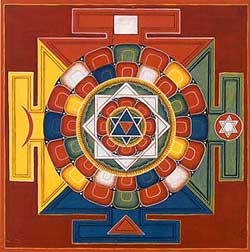Traditional Medicine: Where the Ancient and Modern Worlds Meet
Let’s say that our Ladakhi patient finds no relief in his/her visit to the lhamo. Their next stop is the amchi, who practices Tibetan medicine. The amchi, who may be either a man or a woman, has studied traditional Tibetan medical texts and trained in the collection and use of therapeutic plants and minerals. He or she uses a number of methods to diagnose the patient’s problem. The patient describes the symptoms. The amchi visually examines the patient’s eyes, tongue, urine, and so on. In addition, the amchi listens to the patient’s pulse. She or he may then make dietary and behavioral suggestions and provide a medicine in liquid or powder form. He or she may also provide a physical therapy, either in the form of massage or possibly bloodletting, cupping, or acupuncture. (These are all standard procedures of traditional medicine. Bloodletting and acupuncture will be described below. Cupping involves placing a heated cup on the skin and thus drawing to the surface blood and infection.) There will be no monetary charge for the services, but the villagers repay the amchis by helping them with their farm work.
|
Photo © Andy Weber 1983. Tibetan traditional medicine uses mandalas such as this to explain the relationship between the five elements that were believed to make up the body. |
Traditional medicine is often based on an understanding of the body that is philosophical in nature. This approach is found in traditional Tibetan, Chinese, and Indian medicines. In addition, it occurs in the medicine that developed in ancient Greece after the decline of the temple of Asclepius. All of these traditions view the body as a microcosm of the universe, subject to the same natural laws. They identify what they consider to be the vital fluids of the body, called humors, and relate them to the elements of external nature. This tradition is sometimes called humoral medicine. Disease is explained as a disruption of the natural balance, often caused by blockages in the body. For example in Tibetan traditional medicine taking the patient’s pulse thus becomes all important in revealing the location of blockages.
Humoral medicine continues to have its followers. One of the principal reasons for this is that these traditional practitioners developed many remedies that were clearly beneficial. They also made important discoveries.
This content has been re-published with permission from SEED. Copyright © 2025 Schlumberger Excellence in Education Development (SEED), Inc.


